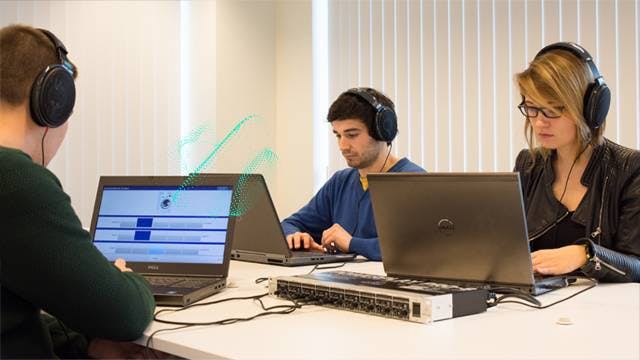Jury Testing: design products that sound just right
As a result of a rapidly changing world, consumer purchasing priorities have shifted dramatically, putting traditional CPG product design processes under strain. This can be overcome by closing the sound quality loop through performance engineering.
The sound that a product makes can have a significant impact on a customer's decision to purchase it or not. Ensuring that it will convey just the right brand value is not only an engineering challenge but involves human psychology as well.
People assess the sound of a product based on their personal preferences. Two coworkers on a noise engineering team, for example, could listen to their vacuum product and disagree about whether it sounds pleasant or not. This situation would make it difficult to move forward with developing a better-sounding product.
Jury testing is a method of objectively evaluating subjective impressions of sounds from a group of listeners (company experts, potential customers, management board) in order to make the best decisions during the product design process.
In this webinar, engineers and product designers will learn how to:
- Prepare sound samples
- Choose the number of jurors
- Design a jury test that meets the specific requirements of a product
- Interpret the results
How does it work in practice?
A set of sounds is played to the jurors during a listening test – it could be a comparison test, for example, in which sounds are grouped into pairs. The jury is then asked whether they prefer sound A or sound B. For a more in-depth examination, the sound can be classified as "strong," "reliable," or "pleasant." They are then asked to rate the sounds in accordance with the suggested categories.
The resulting preference rating or most dominant attribute can be correlated with more objective measures, such as the test prototype variant or sound quality metrics.
Who benefits from jury tests?
In fact, any object that produces sounds can be subjected to such a test. The most common use cases are in the automotive industry, where engines or any of the customer-actuated sounds such as door slam, electric windows, etc. can be evaluated for their sportive or pleasant sound and become points of improvement. Outside of the automotive industry, it is not unusual to investigate the subjective sound preference for a cooling unit on trucks, dishwashers, coffee machines, or lawnmowers, to name a few examples.
Closing the sound quality loop
The product sound quality validation process is completed by jury testing. Correlating objective measures, such as sound quality metrics, with jurors' subjective opinions makes it much easier to create and enhance the sound of a product, which ultimately defines the brand by which customers can recognize it.
Vorstellung des Referenten

Agnieszka Oltarzewska
Product Manager for Acoustics
Agnieszka Oltarzewska ist Product Manager for Acoustics bei Siemens Digital Industries Software. Sie hat einen Master of Science in Akustik von der Technischen Universität Breslau in Polen. Sie wohnt derzeit in Leuven, Belgien. Ihre Arbeit konzentriert sich auf branchenübergreifende Lösungen für die Klangqualitätstechnik und die Charakterisierung akustischer Materialien.
